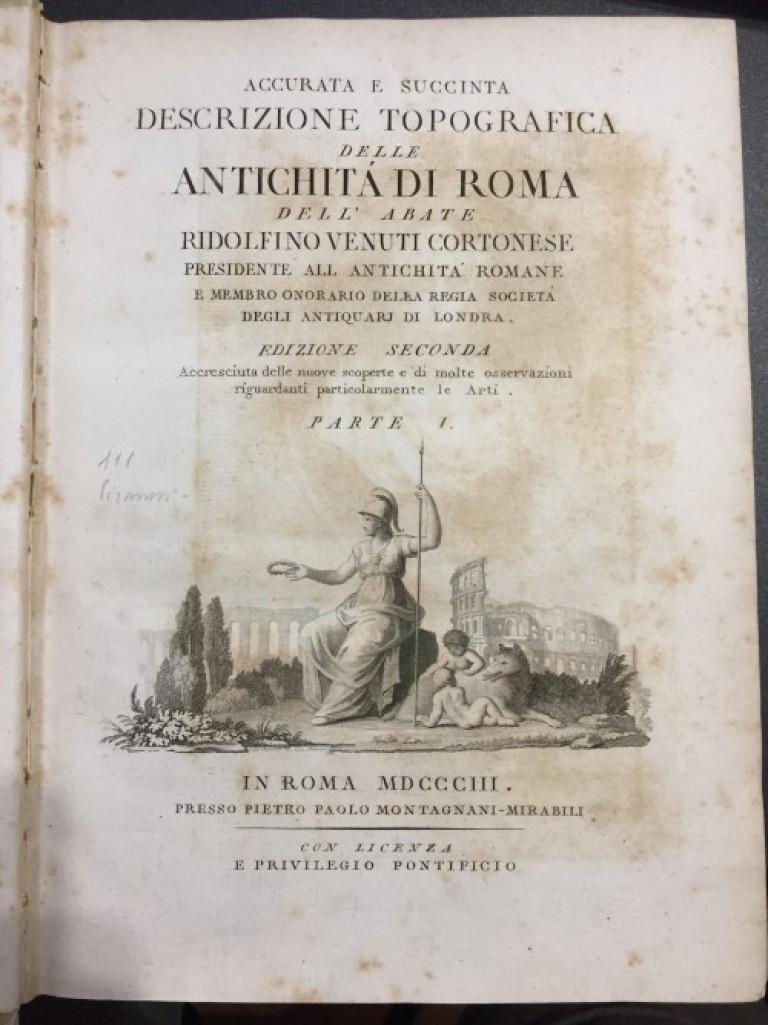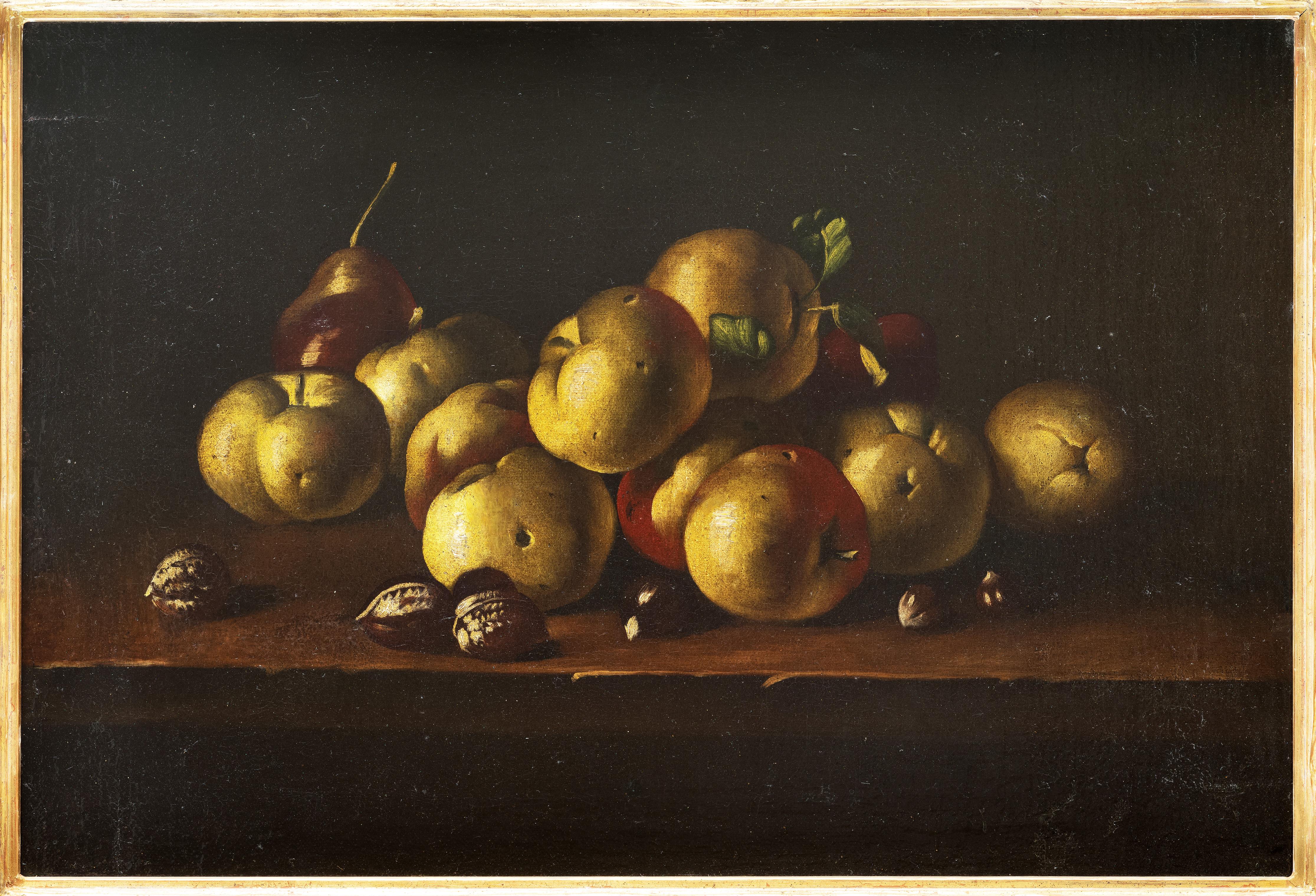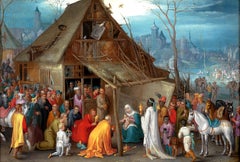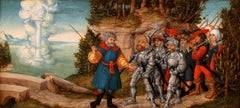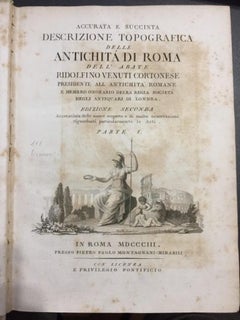
Joseph Telling his Dreams by Rembrandt van Rijn
View Similar Items
Want more images or videos?
Request additional images or videos from the seller
1 of 6
Rembrandt van RijnJoseph Telling his Dreams by Rembrandt van RijnCirca 1641
Circa 1641
About the Item
- Creator:Rembrandt van Rijn (1606 - 1669, Dutch)
- Creation Year:Circa 1641
- Dimensions:Height: 16.25 in (41.28 cm)Width: 13.25 in (33.66 cm)Depth: 1.13 in (2.88 cm)
- Medium:
- Movement & Style:
- Period:
- Condition:
- Gallery Location:New Orleans, LA
- Reference Number:Seller: 31-53331stDibs: LU18610272232
About the Seller
5.0
Vetted Seller
These experienced sellers undergo a comprehensive evaluation by our team of in-house experts.
Established in 1912
1stDibs seller since 2013
Typical response time: 5 hours
More From This SellerView All
- The Adoration of the Magi by Joseph van BredaelLocated in New Orleans, LAJoseph van Bredael 1688-1739 Flemish The Adoration of the Magi Oil on copper Painted on copper and exhibiting an exquisite luminosity, this exceptional painting...Category
Late 17th Century Old Masters Figurative Paintings
MaterialsCopper
- Moses and the Pillar of Cloud by Lucas Cranach the Elder and StudioBy Lucas Cranach the ElderLocated in New Orleans, LALucas Cranach the Elder and Studio 1472-1553 German Moses and the Pillar of Cloud Oil on panel Moses and the Pillar of Cloud is a bold and evocative composition that showcases the signature intense color and intricate detail of Lucas Cranach the Elder’s celebrated oeuvre. The remarkable 16th-century oil on panel by Lucas Cranach and his studio captures the narrative moment when Moses leads the Israelites out of Egypt and encounters God manifested through a large pillar of cloud. Moses stands at the precipice of a bridge and turns back to soldiers helping to lead the group of Israelites who huddle closely together. Cranach depicts Moses with his traditional iconography, rendering the rays of light on his head which came to be interpreted as "horns" in the translation of the Bible. Using his traditional walking staff, Moses gestures toward the pillar, seemingly acknowledging that God will protect the group as they cross the bridge to the other side, leaving exile and entering a promised land. In a nod to Cranach’s Germanic locale, he renders the figures and setting in a manner that feels decisively more akin to European aesthetics than those of the Red Sea. Soldiers wear elaborate, gothic suits of armor that recall the livery of Northern European guardsmen. The terrain appears more like a European forest giving way to a sweeping valley than the arid landscape the Israelites trekked through on their journey across the Red Sea. Though still clearly recounting a story from the Old Testament, Cranach renders the cast of characters and setting in an earthly, familiar manner. This aesthetic shift speaks to Cranach’s own changing beliefs as he found himself at the center of the Protestant Reformation. After first gaining recognition in 1505 as the official painter of Frederick the Wise, Cranach established a thriving painting and print studio in Wittenberg, Germany. Cranach was renowned for his court portraits and genre paintings and was also well known for his association with the famous protestant reformer Martin Luther, then under the protection of Frederick the Wise. As Wittenberg became a bastion of new religious thought, Cranach soon befriended Luther and played an active role in creating the printed materials that proliferated throughout the Reformation...Category
16th Century Old Masters Figurative Paintings
MaterialsOil, Panel
- Portrait Of A Gentleman By Frans HalsLocated in New Orleans, LAFrans Hals 1582-1666 Dutch Portrait of a Gentleman (possibly Theodore Blevet) Oil on panel “Frans Hals is a colourist among the colourists...Frans Hals must have had twenty-seven blacks...Category
17th Century Old Masters Portrait Paintings
MaterialsOil, Panel
Price Upon Request - Leda And The Swan By Workshop Of Bartholomaeus SprangerLocated in New Orleans, LAWorkshop of Bartholomaeus Spranger 16th Century Flemish Leda and the Swan Oil on panel Retelling one of the most legendary Greco-Roman mythological tales, this exceptional oil on...Category
16th Century Old Masters Nude Paintings
MaterialsPanel, Oil
- La femme préhistorique (Prehistoric Woman)By James Jacques Joseph TissotLocated in New Orleans, LAJames Tissot was among the most successful and critically acclaimed artists of the Victorian era. Although the artist is celebrated for his elegant scenes of fashionable life in Paris and London, this work is a fascinating rarity within his oeuvre. In this monumental pastel, Tissot depicts a prehistoric woman draped in a tiger skin, presented with a striking pose and heroic air. His delicate portraiture, combined with his fascination with conveying texture, demonstrates why he was one of the most revered artists of his generation, and La femme préhistorique illustrates the remarkable technique for which he was renowned. This work was completed in preparation for a series of works exploring the Old Testament undertaken by Tissot from 1899-1902 that remained unfinished at the time of his death. A portion of this series focused on illustrations of Adam and Eve, and among these sketches were images of a nude Eve partially draped in animal furs. Towards the end of his life, following his conversion to Catholicism, biblical subjects became important to the artist. A few years before this work was completed, Tissot embarked upon a highly ambitious group of nearly 300 watercolors illustrating the New Testament, presenting the illustrated epic in its entirety at the Paris Salon of 1894. Both of these series were a critical artistic departure for the artist, stemming from a desire to create works separated from his typical images of modern society. This pastel imagines Eve as the prototype of womanhood in the guise of a prehistoric woman. Tissot rarely painted the nude, and his skill as a draftsman highlights the figure's natural beauty, contrasting it with the stark landscape surrounding her. Although a study, this monumental work is incredibly well-finished and highly engaging, with the statuesque model commanding the majority of the canvas. Her pose is strong and theatrical, and she addresses the viewer with a direct, confident gaze. The imagined historical subject of this drawing is grounded by Tissot’s exceptional attention to detail. A master of conjuring an array of textures, Tissot showcased this ability in this work by juxtaposing many types of fabrics and natural elements within one composition. The tiger skin with which the woman partially covers herself was a favorite studio prop of Tissot’s, appearing in many of his most influential works from the period, including several paintings of his partner and favorite model Kathleen Newton. It, in particular, showcases the artist’s understanding of texture, yet it also serves as an exotic element that elevates the sensuality of the scene when placed against the woman’s bare skin. Born in 1836 in the port town of Nantes, Tissot traveled to Paris at the age of 20 in order to join the studios of Hippolyte Flandrin and Louis Lamothe. During this period, he became close with James Abbott McNeill Whistler, Edgar Degas and Edouard Manet, and the impact of these friendships is reflected in his portraits of modern life. Having enjoyed considerable success in Paris during the 1860s, Tissot fought in the Siege of Paris, and after the fall of the Commune in 1871, he went to London, where he stayed for the next ten years. He was met with incredible success there, and he also met the love of his life, Kathleen Newton, a divorcée, with whom he lived from about 1876 until her death in 1882. Today he is regarded among the great masters of Belle Époque painting, and his works can be found in important collections worldwide, including the Metropolitan Museum of Art, the Brooklyn Museum, the National Gallery of Art, the Musée d’Orsay, the Tate Gallery and many others. This pastel remained in Tissot's private collection until his death in 1902 and is referenced in the posthumous 1902-3 valuation of Tissot's home at 64 avenue du Bois...Category
Early 20th Century Academic Nude Drawings and Watercolors
MaterialsLaid Paper, Canvas, Oil Pastel, Pastel
- Portrait of Marcel ProustBy Andy WarholLocated in New Orleans, LAAndy Warhol 1928-1987 American Portrait of Proust Screenprint on paper laid on canvas Created by legendary Pop artist Andy Warhol, Portrait of Marcel Proust holds a special place in the prolific artist's oeuvre. Commissioned by art dealer Marie-Louise Jeanneret for a group of Italian collectors and avid Proust enthusiasts, Warhol's four acrylic and silkscreen ink on linen prints were based on a famous 1895 photograph of the French novelist captured by Otto Wegener...Category
20th Century Post-Impressionist More Art
MaterialsCanvas, Paper, Screen
You May Also Like
- Accurata e succinta descrizione topografia delle Antichità di RomaBy Ridolfino VenutiLocated in Roma, ITComplete title: Accurata e succinta descrizione topografia delle Antichità di Roma dell'Abate Ridolfino Venuti Cortonese Presidente all'Antichità Romane e Membro Onorario della Regia...Category
Early 1800s Old Masters More Art
MaterialsPaper, Etching
- Set of 3 Copper Plate Engravings, by Giovanni Battista PiranesiBy Giovanni Battista PiranesiLocated in New York, NYG. B. Piranesi in his fifties was interested in archaeology and studied in Southern Italy where he produced drawings of Greek architectureCategory
18th Century Old Masters More Art
MaterialsEngraving, Handmade Paper
$6,000 Sale Price36% Off - De Humana PhysiognomoniaLocated in Roma, ITDe Humana Physiognomonia - Libri IIII Original Title: Io: Bap-tistae Portae Neapolitani. De Hum. Physiognomonia. Libri IIII. Ad Aloysium Card. Estensem Vici Aequensis, Apud Iosephum Cacchium, 1586. Vol. In-4° / cm. 32x22 272 pp (typographic mystake for page 265 indicated as 272 an vice-versa) Circulation: Rare First Edition Format: In-4° Pages: 272 Cover on ancient parchment, with title in ink (ancient calligraphy) on spine and “archivistic” decorations in leather and rope on same spine. Binding restored using original contemporary cover. Frontispiece fully engraved with portrait of author within an imaginary composition; portrait of Cardinale d’Este, whom the work is dedicated to, follows with full page engraving. Includes 85 engravings 4 of which full page, showing human physiognomies compared to animals’ in order to demonstrate the relationship between physical aspects and moral features. Good and clean copy, in a nice state. Black stain on p. 97 and minor tear on p. 198. Some whitening on 3-4 pages which do no affect reading. Rare first edition of a pillar of modern anthropology, and one of the most popular essays of Italian Renaissance, with important influence during the following 300 years. First book to be printed in Vico Equense...Category
16th Century Old Masters Figurative Prints
MaterialsEngraving, Paper
$3,044 Sale Price35% Off - Early 19th Century Pastel Depicting The Goddess HebeLocated in London, GBA fine early nineteenth century Regency Period pastel, depicting the goddess Hebe. Pastel upon paper, housed within a period circular mounted rectangular frame. In Greek mythology, Hebe was the goddess of...Category
Early 19th Century Old Masters More Art
MaterialsPastel
- Charles Jervas, Portrait of Joseph MellishBy Charles JervasLocated in London, GBCharles Jervas (1675-1739) Portrait of Joseph Mellish (1675-1733) Oil on canvas; held in a carved period frame Dimensions refer to size of frame. Provenance: Blyth Hall, Nottinghamshire, England; by descent to Sir Andrew Buchanan of Hodsock Priory, Nottinghamshire In 1635 John Mellish, a merchant tailor of London, bought the estate of Blyth in Nottinghamshire. His son, a wealthy Oporto merchant, dying unmarried, left Blyth in 1703 to a cousin, Joseph Mellish, who became one of Newcastle’s earliest and most important political supporters in the county. He went up to Clare College, Cambridge in 1692 and on to the Inner Temple the following year. He married Dorothea Gore, daughter of Sir William Gore...Category
Early 18th Century Old Masters Portrait Paintings
MaterialsOil
- Des Enfants Traînant Un Chariot Chargé de FruitsLocated in Milford, NHA fine oil painting with cherubs and a cart of fruit by French artist Leger Cherelle (1816-1867). Cherelle was born in Versailles, France, a...Category
1830s Old Masters Figurative Paintings
MaterialsOil, Board
Recently Viewed
View AllMore Ways To Browse
Rembrandt Van Rijn Etching
Adam Lister
Original Rembrandt Etching
Joseph Adam
17th C Etchings
17th C Dutch Portraits
17th C Dutch Portraits
Saint Painting 18th C
18th Century Art Dog Portraits
Jacobs Dream
18th Century Child With Dog
Rembrandt And Saskia
Rembrandt Portrait Of Son Titus
Animation Cel
Vintage Alien
Bug Vintage
Vintage Bug
Vintage Bugs
